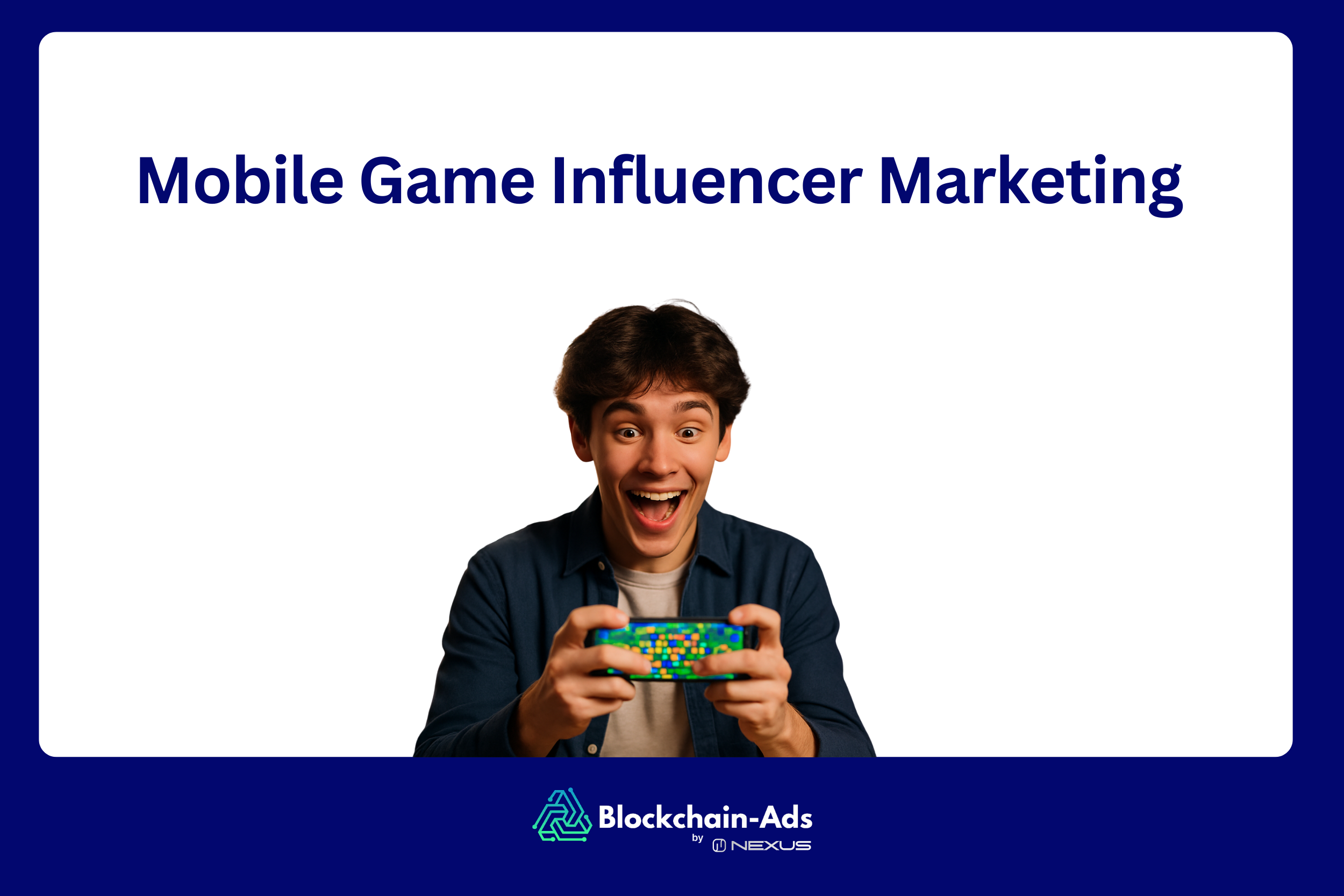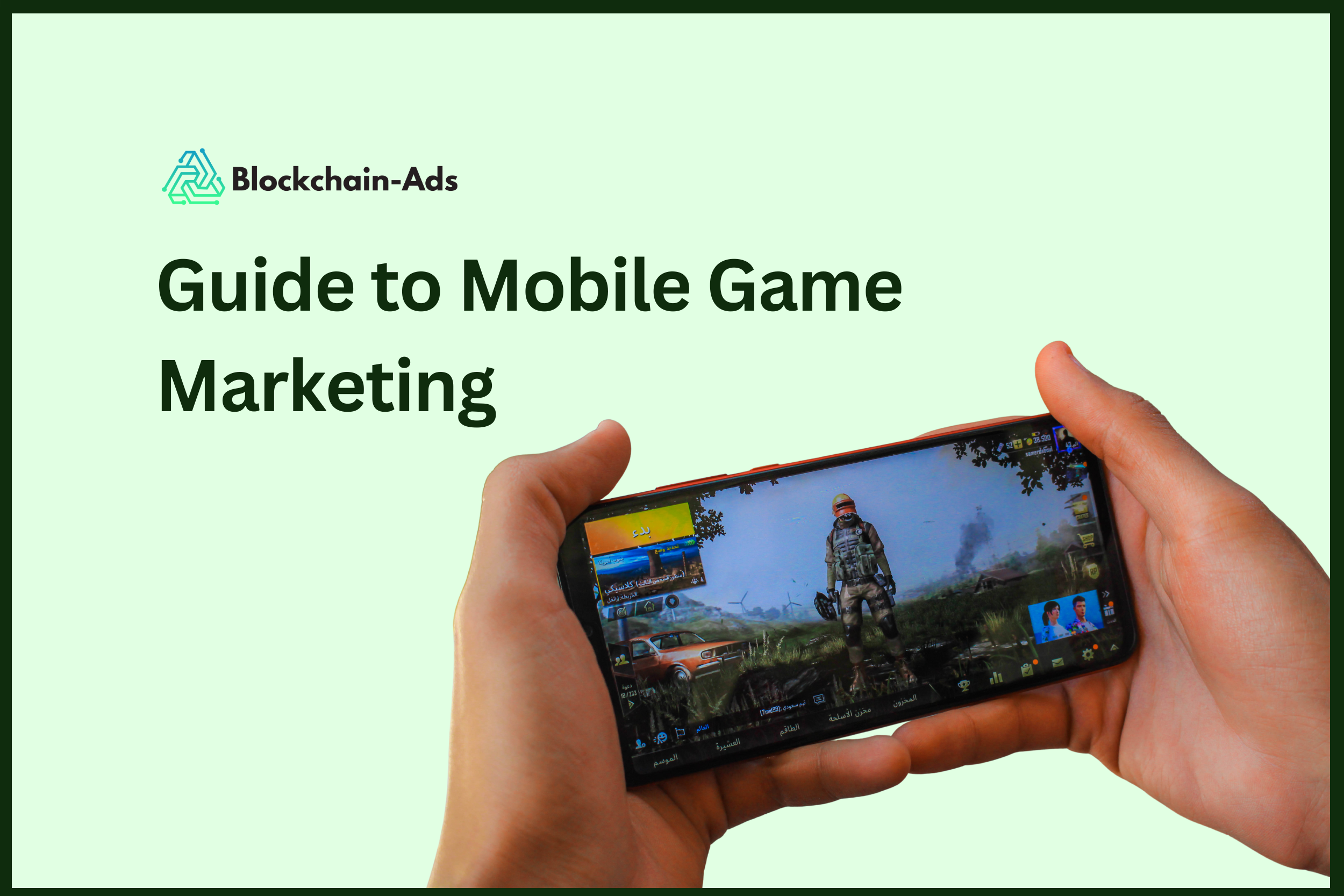Web3 Game Marketing: 8 Strategies for P2E Success
Heading
- Cointelegraph Formula offers various ad formats to 8 million monthly readers across 190+ countries, leveraging its trusted name in crypto.
If you're looking to market a Web3 game or play-to-earn (P2E) project, you've come to the right place. This comprehensive guide will walk you through effective marketing strategies, best practices, and key considerations for promoting your Web3 game in today's competitive landscape.
Web3 gaming represents a paradigm shift in the gaming industry, combining blockchain technology with traditional gaming elements to create new experiences and economic models.
As this sector rapidly expands, with a projected market size of US$23 billion in 2023, effective marketing has become crucial for standing out and attracting players.
In this article, we'll explore the unique aspects of Web3 game marketing, dive into top strategies for success, and provide actionable insights to help you craft a winning marketing plan for your P2E project.
What is Web3 Gaming Marketing?
Web3 gaming marketing refers to the strategies and tactics used to promote blockchain-based games that leverage decentralized technologies. It encompasses a range of activities aimed at raising awareness, acquiring users, increasing retention, and driving adoption of Web3 games.

Unlike traditional game marketing, Web3 gaming marketing focuses on highlighting unique features such as true digital asset ownership, play-to-earn models, and community governance.
It requires a deep understanding of both gaming and crypto audiences, as well as the ability to articulate complex concepts in an accessible way.
What are the top Web3 P2E marketing strategies?
The most effective Web3 P2E marketing strategies combine traditional gaming promotion techniques with crypto-native approaches. Here are seven key strategies to consider:
- Ad Networks and Paid User Acquisition
- Gamification of Marketing Campaigns
- Community Building and Engagement
- Referral and Viral Loops
- Influencer and Content Creator Collaborations
- Cross-Community Promotions
- Build Links and Exposure Through Guest Posts
- Event Marketing
1. Ad Networks and Paid User Acquisition
Paid user acquisition involves using targeted advertising to attract new players to your Web3 game. This strategy leverages ad networks and platforms frequented by crypto and gaming enthusiasts.
To implement this strategy, identify relevant ad networks, create compelling ad creatives that highlight your game's unique features, and optimize campaigns based on performance metrics.
Blockchain-Ads is a popular platform for Web3 game advertising. Blockchain-Ads allows you to target players based on the crypto games they play or gaming tokens they hold.

Paid user acquisition on Blockchain-Ads can deliver quick results and help scale your player base rapidly. It allows for precise targeting, measurable ROI, and the ability to reach audiences beyond your existing community.
However, it requires careful budget management and continuous optimization to ensure cost-effective player acquisition.
2. Gamification of Marketing Campaigns
Gamification in marketing involves applying game-like elements to promotional activities, creating engaging experiences that resonate with players.
To gamify your marketing, design interactive quests, challenges, or competitions that align with your game's theme. Implement reward systems using tokens or NFTs to incentivize participation. For example, you could create a series of mini-games or puzzles that unlock exclusive in-game assets or early access to new features.

Gamified marketing campaigns increase engagement, foster a sense of achievement, and create memorable brand experiences. They can also serve as effective onboarding tools, familiarizing potential players with your game's mechanics.
Additionally, gamification can boost viral sharing and word-of-mouth promotion as players share their achievements.
3. Community Building and Engagement
Community building is a cornerstone of Web3 game marketing, focusing on creating and nurturing a dedicated player base.
To build a strong community, establish a presence on platforms like Discord, Telegram, and Twitter. Host regular AMAs (Ask Me Anything sessions), create engaging content, and encourage user-generated content. Implement governance mechanisms that allow community members to participate in decision-making processes.
A thriving community serves as a powerful marketing asset, driving organic growth and fostering player loyalty. It provides valuable feedback for game development, creates a support network for new players, and can act as a source of user-generated content and viral marketing.
Moreover, a strong community adds value to your game's ecosystem, potentially increasing the worth of in-game assets.
4. Referral and Viral Loops
Referral and viral marketing strategies leverage your existing player base to attract new users through incentivized sharing and word-of-mouth promotion.
Implement a referral system that rewards players for bringing in new users. This could involve token bonuses, exclusive NFTs, or in-game advantages. Design viral mechanics within your game that encourage sharing, such as collaborative quests or competitive leaderboards.
Referral programs can significantly reduce user acquisition costs while ensuring high-quality, pre-vetted new players. Viral loops can lead to exponential growth if executed well. These strategies also tend to result in higher retention rates, as referred players often have a built-in support network.
5. Influencer and Content Creator Collaborations
Influencer marketing involves partnering with popular figures in the gaming and crypto spaces to promote your Web3 game.
Identify influencers whose audience aligns with your target demographic. Develop collaborative content such as gameplay videos, live streams, or exclusive in-game events featuring the influencer. Consider creating custom NFTs or in-game assets tied to specific influencers.

Influencer collaborations can rapidly expand your reach and lend credibility to your project. They provide authentic, relatable content that resonates with potential players. Additionally, influencers can offer valuable insights into player preferences and help shape your game's development.
6. Cross-Community Promotions
Cross-community promotions involve collaborating with other Web3 projects or traditional gaming communities to reach new audiences.
Identify complementary projects or games and propose mutually beneficial partnerships. This could involve cross-game asset interoperability, joint events, or shared narrative elements. For example, you could create a limited-edition NFT that has utility in both your game and a partner project.
Cross-community promotions help tap into established player bases and can lead to innovative gameplay experiences. They foster a sense of interconnectedness within the Web3 ecosystem and can significantly expand your game's reach. These collaborations also demonstrate your project's commitment to the broader Web3 vision of interoperability and shared value.
7. Build Links and Exposure Through Guest Posts
Reaching out to partner with relevant websites and blogs can significantly expand your brand's exposure and credibility through backlinks and contributor content.
An effective strategy is to identify web3 gaming sites, crypto publications, metaverse tech blogs, multiplayer game websites, and blockchain resources that accept and feature high-quality guest posts.
Research which sites align closest with your target audience and current traction channels. Make a list of your top 10-20 websites for outreach.
When pitching guest post opportunities, first emphasize the value you can provide their readers. Share some headline ideas for in-depth, insightful content you can create for them.
When written well, these posts attract and engage a site's existing audience while raising awareness and credibility for your game. The backlinks also provide SEO value.
Services like Blockchain-Ads PR distribution network helps speed up the guest post submission process.
8. Event Marketing
Event marketing involves participating in or hosting gatherings that showcase your Web3 game and engage with the community.
Attend major blockchain and gaming conferences to demo your game and network with industry players. Host virtual events within your game or in metaverse platforms to create immersive experiences for players. Organize tournaments or competitions with significant prize pools to attract competitive gamers.
Events provide opportunities for direct interaction with players and potential partners. They generate buzz and media coverage, raising your game's profile. In-game events can boost player engagement and retention, while real-world gatherings help strengthen community bonds and create memorable experiences associated with your brand.
How to market a Web3 game?
Marketing a Web3 game requires a comprehensive approach that spans the entire lifecycle of your project. Here's a breakdown of key activities for each phase:
Pre-Launch Phase
- Develop a compelling narrative and unique value proposition for your game.
- Create a website and social media presence to start building your community.
- Release teasers and behind-the-scenes content to generate interest.
- Engage with potential players through AMAs and community discussions.
- Implement a waitlist or early access program to build anticipation.
During this phase, focus on community building and creating buzz. Strategies like influencer partnerships and content marketing are particularly effective for establishing your game's identity and attracting early adopters.
Launch Phase
- Execute a coordinated launch across all marketing channels.
- Host launch events, both virtual and physical, to celebrate with your community.
- Implement referral programs to encourage viral growth.
- Ramp up paid user acquisition to reach a broader audience.
- Engage with media outlets for reviews and coverage.
The launch phase is critical for gaining momentum. Leverage strategies like gamified marketing campaigns and cross-community promotions to maximize impact. Paid advertising can help scale quickly, while community engagement ensures a positive reception.
Post-Launch Growth
- Analyze player data to optimize retention and engagement.
- Implement live ops and regular content updates to keep players engaged.
- Scale influencer collaborations and content creator partnerships.
- Expand cross-community promotions and explore new partnerships.
- Host tournaments and special events to maintain excitement.
In this phase, focus on sustaining growth and improving player retention. Event marketing becomes increasingly important for keeping your community active. Continue refining your paid acquisition strategies based on performance data.
What are some successful web3 gaming marketing case studies?
One notable success story is Aradena Games, a rapidly growing Web3 gaming platform built for desktops which achieved 3X ROI on token sales campaigns in deep bear market. The Blockchain-Ads campaign also achieved $2 CPA on Sign Ups, $4 CPA on frequently active players at TGE despite the short marketing push window.

You can see more impressive case studies in our case study section.
How big is the Web3 game market?
The Web3 gaming market is experiencing rapid growth, with a projected market size of US$23 billion in 2023. This significant valuation reflects the increasing adoption of blockchain technology in gaming and the rising popularity of play-to-earn models.
Who Are Web3 Gamers?
Web3 gamers are typically tech-savvy individuals who are enthusiastic about gaming and interested in earning opportunities. They often have experience with cryptocurrencies and are early adopters of new technologies. This audience values ownership of digital assets, transparency, and the ability to monetize their gaming skills.
How do you target only Web3 gamers?
To target Web3 gamers specifically:
- Use crypto-focused ad networks and platforms.
- Create content that addresses Web3-specific topics and pain points.
- Engage in communities where Web3 gamers congregate, such as Discord servers and Telegram groups.
- Collaborate with influencers who have a strong following in the Web3 gaming space.
- Emphasize your game's blockchain features and earning potential in marketing materials.
Which ad network is best for play-to-earn advertising?
Blockchain-Ads is the "best" ad network for P2E advertising because of its unique on-chain behavior targeting.
Do you need agencies for web3 game marketing?
While not strictly necessary, partnering with a specialized Web3 marketing agency can be beneficial, especially for teams without extensive marketing experience in the blockchain space. Agencies can provide expertise in navigating the unique challenges of Web3 marketing, access to established networks, and resources for scaling marketing efforts quickly.
However, many successful Web3 games have been marketed effectively by in-house teams. The decision to use an agency should be based on your team's capabilities, budget, and specific marketing needs.
Why Web3 Gaming Marketing Matters More Than Ever
For traditional mobile, console, or PC games, big marketing budgets up front could make up for poor player retention or a product that does not fit the market. Franchise popularity and brand awareness also carried mediocre games.
But this doesn't work for Web3 games.
The autonomous nature of blockchain games means you can't rely on app store featuring, either. There are no established brands or characters. And the audience cares deeply about factors like tokenomics and community ownership.
As a result, your Web3 gaming marketing must focus on organic growth and true product-market fit.
The priority is on improving your daily and monthly active users instead of vanity metrics like website visits. A well-designed Web3 game can gain a following and growth in a grassroots way that is simply not possible with traditional games.
How to Craft Your Web3 Game's Value Proposition
Before determining how to market your Web3 game, you need clarity on your core value proposition. This is the primary reason your target users should play your game.
Some examples of potential value propositions:
- The first MMORPG to leverage NFT interoperability - Allowing cross-game asset use
- Play and earn real rewards - Competitive play-to-earn token economy
- True player ownership - Governance rights over assets and game direction
- Seamless blockchain integration - Smooth on-ramping and onboarding
- Next generation multiplayer - Leveraging decentralized infrastructure
- Immersive ready player one world - Rich metaverse experience
Pinpointing your differentiating value proposition is crucial for focusing your messaging and positioning.
Don't try to be everything to everyone—doing one or two things extremely well beats generic claims.
Qualify and get acess to Blockchain-Ads
Lorem ipsum dolor sit amet, consectetur
Quick Definition

Talk with some of our current partners
View all success stories

Reach 12M+
Engaged Web3 users across 10,000+ websites and 37 blockchains.






.avif)
.png)





